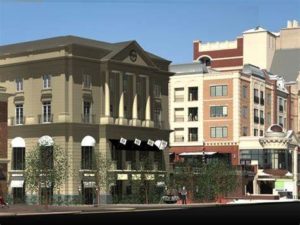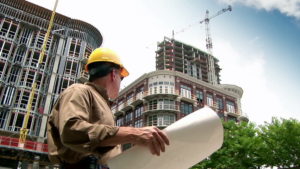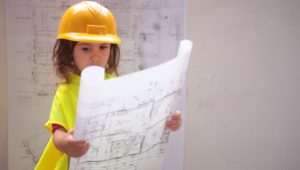The current campaign for Mayor of Carmel offers voters two rather starkly contrasting visions of what the next four years could be like within the city.
 The first vision is centered around what its supporters refer to as “public-private partnerships” (notice how “public” always comes first). This is the idea that public “investments” (public issues of bonded debt) are made in order to control the manner is which specific parcels are developed. In this vision, elected officials and city redevelopment staff — rather than the free market — decide the style, placement and size of buildings and related infrastructure. Development and other projects are done on a large scale, rather that incrementally, so that it becomes difficult to measure the true lasting public benefit and success of them until completely built out and tens of millions of public dollars spent.
The first vision is centered around what its supporters refer to as “public-private partnerships” (notice how “public” always comes first). This is the idea that public “investments” (public issues of bonded debt) are made in order to control the manner is which specific parcels are developed. In this vision, elected officials and city redevelopment staff — rather than the free market — decide the style, placement and size of buildings and related infrastructure. Development and other projects are done on a large scale, rather that incrementally, so that it becomes difficult to measure the true lasting public benefit and success of them until completely built out and tens of millions of public dollars spent.
 This vision views and addresses maintenance of public infrastructure created with public debt as an afterthought, expect in those “showcase” areas near favored redevelopment in the core area of the city. Basic infrastructure has to be expanded at cost to taxpayers, rather than using a shared cost structure with developers.
This vision views and addresses maintenance of public infrastructure created with public debt as an afterthought, expect in those “showcase” areas near favored redevelopment in the core area of the city. Basic infrastructure has to be expanded at cost to taxpayers, rather than using a shared cost structure with developers.
Projects built under this vision are financed through a combination of public debt and private capital, with the public portion to be repaid through collection of all property taxes collected for the increased property value as a result of the improvements. In essence, the city becomes a de-facto lender to preferred large developers, competing against private equity and other sources of construction capital.
 In this vision, comprehensive land use planning is subrogated by the quest for greater density and to maximize the value of each and every parcel. Zoning variances are freely granted, often without adequate public involvement to address potential impacts to existing development — particularly adjacent residential areas.
In this vision, comprehensive land use planning is subrogated by the quest for greater density and to maximize the value of each and every parcel. Zoning variances are freely granted, often without adequate public involvement to address potential impacts to existing development — particularly adjacent residential areas.
The other vision embraces an organic evolution of development that allows all sections of the city to develop according to supply and demand, as well as a comprehensive zoning plan that addresses natural hazards and buffers between residential and commercial areas. Public investments and redevelopment are done incrementally, so that it becomes much easier to measure the public benefits and successes — making it much easier to adjust and change course as necessary without overcommitting public money and resources.
This alternative vision restricts the use of tax-increment financing (TIF) to only those projects directly addressing existing blight. Existing TIF projects are allowed be expire as they are paid off, thus allowing more revenue to become available to the operational budgets of local schools, libraries, parks and city services.
This vision puts forth and funds a sustainable program of funding maintenance of existing infrastructure. Costs associated with expanding infrastructure are shared with developers.
In this other vision, the comprehensive land use and zoning master plans are respected and variances are reviewed under much more stringent criteria with greater public input and involvement.
The first vision is promoted by Jim Brainard and council incumbents that now seek your vote. They want to propagate a perpetual cycle of higher-density development and infill, in order to bolster the tax base to significantly higher levels to provide revenue for the rapidly-escalating cost of servicing more than $1.3 billion in bonded debt that has accrued on their watch.
 The other vision is promoted by mayoral challenger Fred Glynn and those council candidates challenging the incumbents. They understand that for a community to truly thrive and prosper over the long term and be able to remain resilient to cyclic weaknesses in the economy, municipal finances — including debt service obligations — must remain at sustainable levels. Revenue and expenses must remain in balance and non-essential community projects are funded on a pay-as-you-go methodology that avoids long-term borrowing.
The other vision is promoted by mayoral challenger Fred Glynn and those council candidates challenging the incumbents. They understand that for a community to truly thrive and prosper over the long term and be able to remain resilient to cyclic weaknesses in the economy, municipal finances — including debt service obligations — must remain at sustainable levels. Revenue and expenses must remain in balance and non-essential community projects are funded on a pay-as-you-go methodology that avoids long-term borrowing.
This election is not only about competing visions, but also about the future. Your future and that of future generations of Carmel citizens. Tune out the campaign talking point for the campaigns and ask your own tough questions of each candidate. Listen to their answers and study their body language.
Then, cast an informed vote on May 7th!

Brought to you by Essayists of Carmel, Indiana

